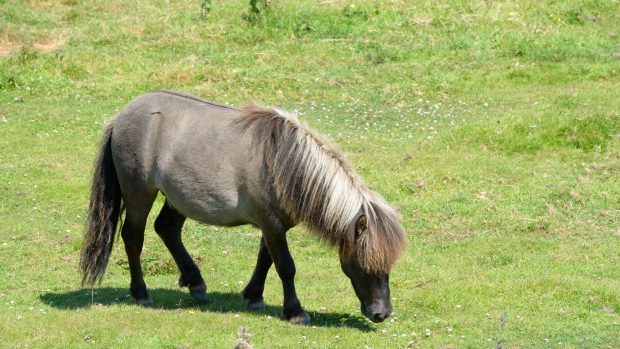Farrier Andrew Poynton, from Malmesbury, Wilts has played a major role in helping reduce the pain and suffering of horses suffering from laminitis, since developing a plastic shoeing system specifically for the purpose.
Andrew first began working seriously on the Imprint plastic shoe after being asked by a vet to shoe an acute laminitic towards the end of the 1990s. The chance meeting occured after Andrew attended a British Equine Veterinary Association conference on laminitis.
Andrew explains: “It was a Saturday evening when we took all the X-rays and measurements. By late Sunday I had created the basic principle of a plastic, adjustable heart-bar shoe. It was made from different grades of low-melt thermo-plastic, which could be moulded to the foot at low temperatures.”
The shoe provided such instant pain relief and was so gentle and non-traumatic to fit that the difference was immediately visible. From the success of this first shoe, the system and design continued to evolve, until Andrew patented it in 2000.
Andrew’s main criteria for developing the Imprint system was:
- to minimise trauma
- to provide a non-invasive, perfect fit
- to maximise support without compromising the natural functions of the foot
- to help shoes retention throughout the treatment period
The lightweight shoes are available in seven sizes for remedial, therapeutic and orthopaedic purposes. The rear of the Imprint shoes has a “W” flexing bar, making it look similar to a heart-bar shoe, while allowing a full range of natural movement.
The shoeing process
When confronted with a laminitic horse, Andrew explains that the crux of the matter is to provide first aid by supporting the pedal bone via the frog, elevate the sole and correct the orientation around the pedal bone.
“A classic laminitic foot has long toes, and the pedal bone inside is doing a nose-dive,” he explains. “The farrier works with the vet to re-attain the alignment and orientation. I always work with the worst foot first and trim from an X-ray and the external signs.
“The shoes are softened in hot water, while I make three oval indentations on a clean, dry hoof to form dovetail effects to receive the plastic — I call it a jigsaw puzzle or button-on technique,” he explains.
When the plastic begins to go clear, the shoe is ready to be moulded to the perfect shape, before being fixed to the foot with adhesive. Once in position, it is sprayed with imprint shoe freezer, and when cool (2-3min) the foot can be placed back on the ground. The horse must then stand on it for 10-15mins until the adhesive has hardened. The whole shoe can then be rasped and smoothed if required.
Linda Belton, a partner in The George Veterinary Group Equne Clinic in Malmesbury, has been working closely with Andrew throughout the shoes’ development period.
“There are two factors that make theses shoes so different,” she explains. “Firstly, the flexibility about how you can build and make the shoe. They are individual and very precise, without losing any strength or support.
“Secondly, they provide huge comfort, especially in laminitic cases, relieving pressure from specific areas. This makes them very adaptable.”
For more information on Imprint shoes (tel: 01666 822953) or visit: www.imprintshoes.co.uk



